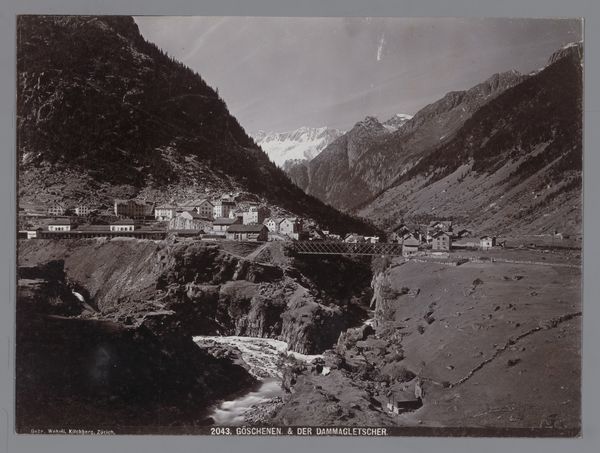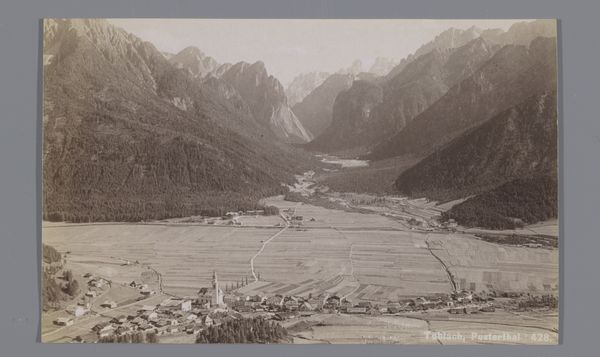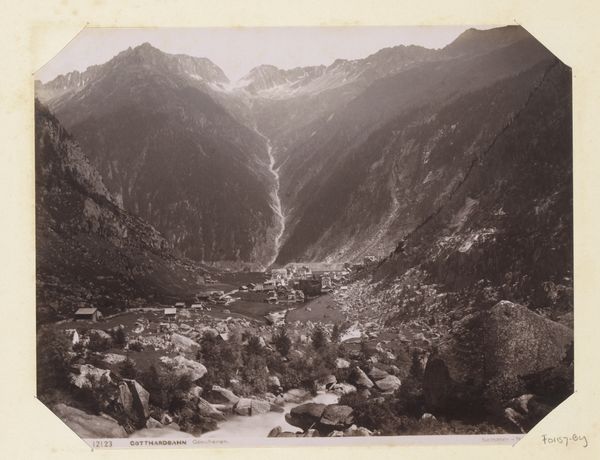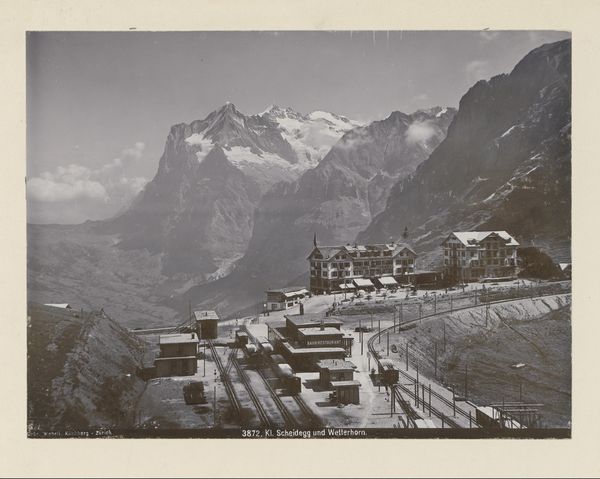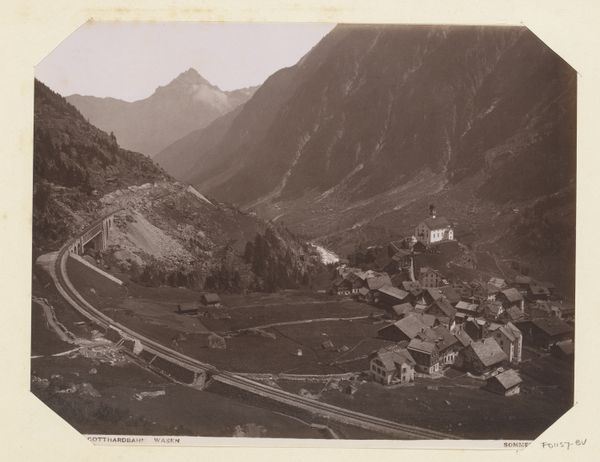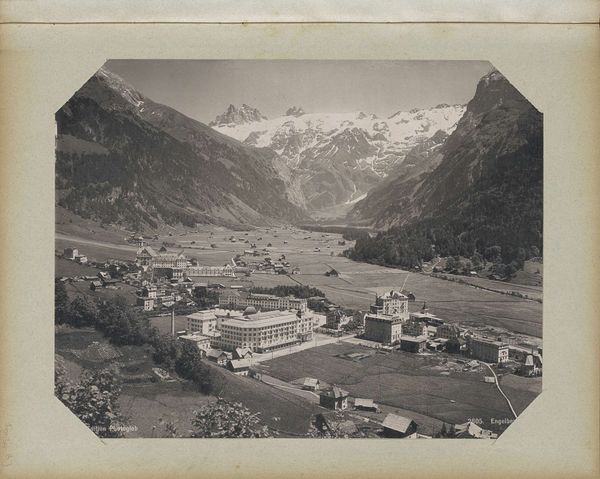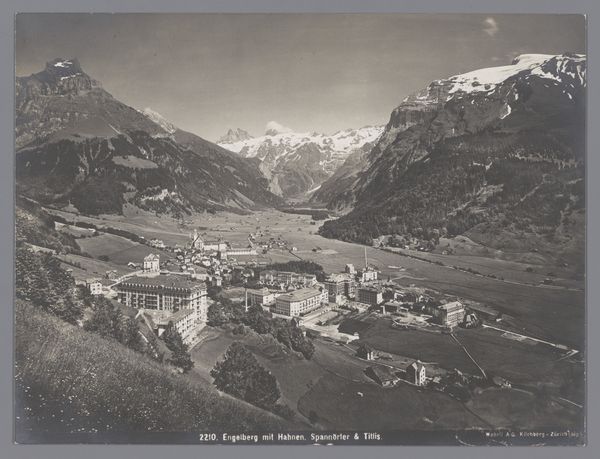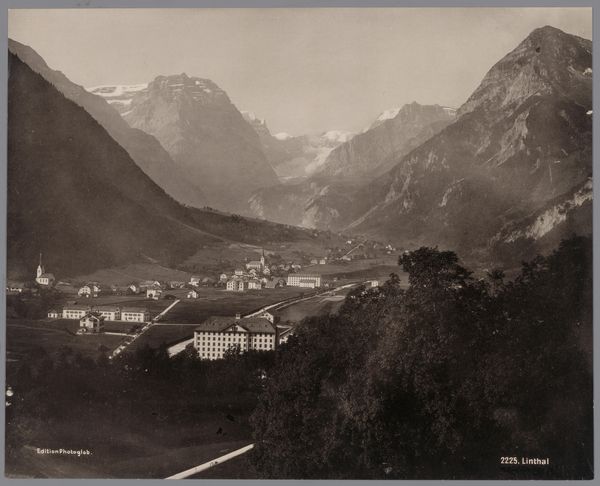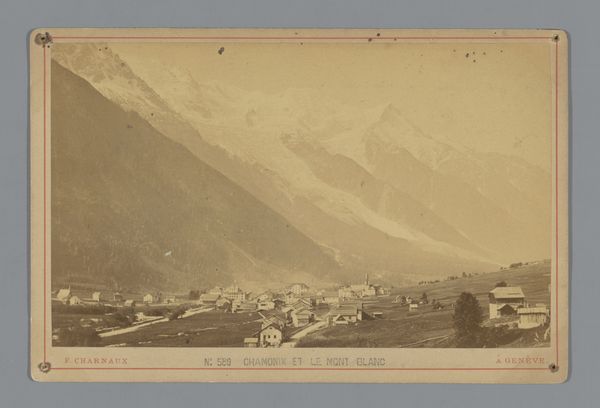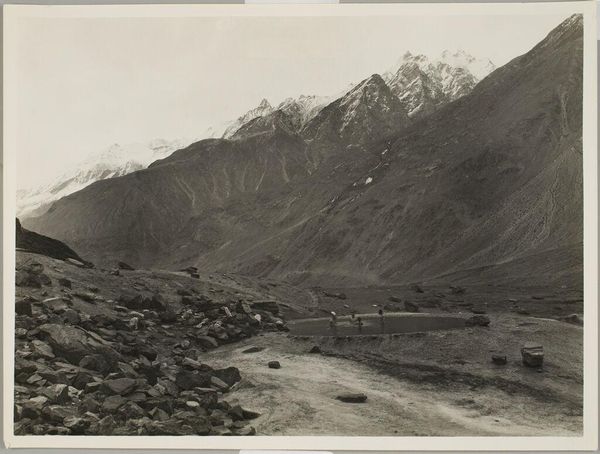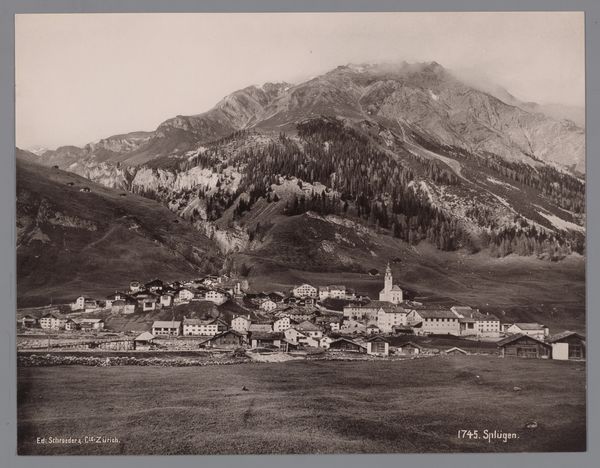
photography
#
pictorialism
#
landscape
#
photography
#
cityscape
Dimensions: height 218 mm, width 161 mm
Copyright: Rijks Museum: Open Domain
Curator: Looking at this photograph, taken sometime between 1910 and 1925, we see "Göschenen en het Rienthal, Zwitserland" by Gebrüder Wehrli. Editor: Immediately striking is the imposing scale; it presents a tiny village dwarfed by gigantic geological forces. The greyscale rendering adds to that feeling, creating a somber, timeless impression. Curator: It's true, the lack of color focuses our attention on form and texture. Consider, too, the larger historical context—this image emerges in an era of burgeoning industrialization and increased tourism. The photograph positions the village and the Alps as a sublime space, perhaps untouched, or at least enduring despite modern changes. How do you perceive that materiality, considering the context? Editor: I find it interesting to note the actual rock debris piled high in the foreground. It hints at the physical labor involved in simply navigating such terrain, while simultaneously feeding into that constructed romanticization of untamed landscapes, ripe for exploitation, literally. It presents a paradox: awe and access intertwined. Curator: I think your observations are correct. There’s tension evident between the village—a testament to human inhabitation and industry—and the raw, powerful landscape, a place to visit but not control. It touches on colonial or even neo-colonial ideas of the picturesque and how landscape plays into identity and access. Editor: I think the act of photography, as an industrial, reproducible medium, also reflects evolving means of consumption. Images like this drove a hunger for a tourist economy and its extraction of material resources. Curator: Precisely. It urges a need to unpack the complex dynamics between representation, power, and the land. Thinking of accessibility in contemporary terms—how does a historical piece like this relate to ongoing discourse about accessibility in hiking, skiing, even in visual art today? It demands broader engagement. Editor: By foregrounding materiality and the methods of both the physical and photographic landscape, it becomes apparent this image is neither a transparent document nor passive art but one entangled with the production and promotion of land as product. The stark contrast illuminates complex interplay in ways you would simply not register if you looked at a brightly colored picture. Curator: Absolutely. Analyzing historical landscape photography through an intersectional lens highlights critical perspectives we can and should adopt today, questioning inherited ideologies embedded in the landscapes around us and their presentation. Editor: It pushes us to consider not only what is shown, but also what narratives are obscured in plain sight, even, or especially, by beautiful pictures like this one.
Comments
No comments
Be the first to comment and join the conversation on the ultimate creative platform.
